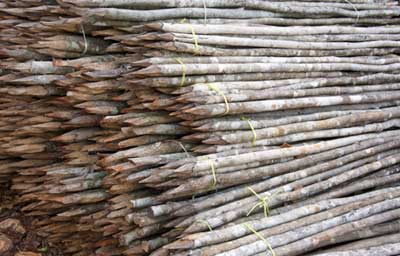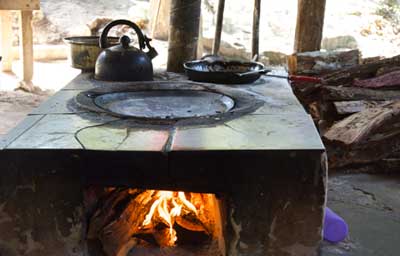Manejo forestal sostenible en el sur de la Península de Yucatán

Al caminar por sus senderos aparece poco a poco en la escena una enorme cantidad de especies de aves, entre ellas la majestuosa águila elegante, y más adelante las huellas frescas de un tapir van revelando la biodiversidad que guarda esta selva que da refugio incluso al mítico jaguar. El ejido 20 de Noviembre es un macizo forestal al sureste de Campeche que se encuentra rodeado de ejidos vecinos con áreas deforestadas para cultivos y ganadería. La pregunta no se hace esperar ¿qué hace que este ejido pueda mantener una selva en buen estado de conservación? La respuesta es 20 años de manejo forestal sostenible y un grupo de 67 ejidatarios bien organizados con asesoramiento técnico permanente. Don Elías Cahuich, Comisario Municipal y persona referente en la comunidad, cuenta que hace unos 30 años no había ordenamiento forestal en el ejido, y “el aprovechamiento implicaba cortar donde sea”. Pero en el año 1994, con asesoramiento técnico, el ejido realizó su primer inventario en 5,000 hectáreas, convirtiéndose en el primer plan ordenado para el aprovechamiento forestal, momento en que se decidió destinar un área de 1,913 hectáreas para conservación comunitaria permanente. En 2005 se aprueba un segundo programa de manejo forestal para incluir 8,000 hectáreas, y en 2006 se realiza el ordenamiento territorial comunitario, ya no solo forestal, sino de todo el ejido. Como resultado, el 90% del ejido cuenta con cobertura forestal, y la razón es que su economía gira entorno a la madera, lo cual con asesoría técnica permanente y el cuidado de no rebasar los volúmenes aprovechables ha permitido mantener esta selva bajo manejo en buen estado de conservación.
Juan Alberto Villaseñor, de Iniciativa para el Desarrollo Integral Comunitario del Sureste AC (DICOS), explica que uno de los hitos importantes es cuando se realiza el ordenamiento territorial comunitario en el año 2006, y lo más relevante es que por medio de un proceso participativo la comunidad se apropia del plan. Otro momento a destacar es en 2010 cuando se compra un aserradero con aportes de TNC, CONAFOR y el ejido, lo cual marca definitivamente la vocación forestal y da un nuevo impulso económico al poder ofrecer madera procesada. El interés de colaboración por parte de TNC con el ejido continuó, y en 2013 ambos iniciaron un estudio para valorar los impactos que genera el aprovechamiento forestal en relación a la liberación de carbono en la atmósfera. Se tomaron mediciones en los claros que se formaban por derribo, despuntado, descortezado, también medidas de diámetros, carriles de arrastre, caminos, entre otras. “Estas mediciones son útiles para los asesores técnicos en la toma de decisiones de manejo, pero lo más importante es que la comunidad participa del estudio y se apropia de los resultados”, explica Juan Alberto. A raíz del estudio, el ejido incorporó una serie de estrategias de manejo mejorado, como planeación de corta o uso de tecnologías alternativas de arrastre. Con ello, podrá reducir las emisiones de GEI generadas por la actividad, y tener una forestería baja en emisiones de carbono. En el año 2013 surge un obstáculo para 20 de Noviembre, debido a que dentro del plan de ordenamiento territorial municipal, el área forestal permanente del ejido quedó considerado como zona de protección e investigación, debido al buen estado de conservación en que se encuentra. Esta situación complicó la renovación de permisos para el aprovechamiento forestal, lo que impactó negativamente en la economía del ejido que depende en un 80% de esta actividad. Josué Isaías Ku, presidente del Comisariado Ejidal, explica que SEMARNAT tiene disposición de renovar el permiso, pero para eso se hace necesaria una modificación en el plan de ordenamiento territorial municipal, y en eso se encuentran trabajando. “Mientras esperamos la renovación del permiso, dice Josué, la economía del ejido gira entorno a la producción de miel y algunos Programas de Empleo Temporal, pero no es tan significativo como la actividad forestal”. Una de las lecciones más importantes para el ejido 20 de Noviembre es quizás sobre la necesidad de diversificar las actividades económicas. Si bien a través de los años han demostrado ser muy buenos empresarios forestales, la experiencia les ha indicado que una demora imprevista en los permisos de aprovechamiento puede echar a perder años de trabajo si no se cuenta con otra fuente de recursos. En ese sentido, Juan Alberto Villaseñor cuenta que ha habido un cambio de actitud para empezar a considerar otras actividades como apicultura, milpa mejorada, conservación y ecoturismo. El mayor potencial del ejido seguirá siendo el manejo forestal, pero ya tienen la idea de explorar otras opciones que complementen sus ingresos. “Una de las decisiones más acertadas en todos estos años de trabajo, dice Juan Alberto, ha sido siempre la toma de decisiones de manera participativa”. El ejido está muy bien organizado, y es considerado como ejemplo de buen manejo forestal en la región, características que han permitido interactuar con otras organizaciones como TNC, PNUD o People and Plants International. Quizás el siguiente paso que se tendría que dar sea hacia el fortalecimiento de la empresa forestal, porque hasta el momento se ha trabajado muy bien en aspectos técnicos, pero es necesario tener un grupo especialmente conformado para que se encargue de la administración y de la comercialización. “Es bonito cuando se trabaja en grupo, con sesenta y cuatro personas todo se hace rápido. La comunidad está unida y organizada, en las asambleas tenemos asistencia del 90%. Tenemos un convenio para organizarnos, y eso tiene buenos resultados”, comenta Don Elías Cahuich, resaltando nuevamente la importancia de estos elementos para un exitoso manejo forestal a nivel territorial.
|





















